Walking the Dry Stone Route
Reflections and practicalities of my 145km walk on Mallorca’s GR221
This piece combines reflections on some of the encounters I had with practical information about walking the GR221 — with pictures to make it easier (and more fun) to read. Click here to skip to the practical bits and bobs. Go here if you haven’t read my other introductory post and want to know about my walking plans.
I’ve visited many places in the Tramuntana mountains over the years - Estellencs, Banyalbufar, Valldemossa, Deià, Sóller, Pollença - always by car. Experiencing it on foot and at a walking pace felt completely different - like it’s a different place and in a different century. The experience comes closer to the stories my grandmother told me about the Mallorca she remembered from the 30s, 40s, and 50s, when she was growing up here. No resorts, no hordes of tourists, no big new roads, no tourist busses, but olive trees, almond trees, pine trees, carob trees, rosemary, thyme, lavender, goats, sheep, birds.
Quickly into the walk, I let go of my initial idea to write daily. Writing full pieces on my phone just didn’t work. Surprisingly, the walk turned out to be far more social than I expected—mostly in a good way. I did not have dinner by myself one night and was walking with other people most of the days. There was little time alone. I have thoughts about walking alone vs. walking together; I will put them into writing at a certain point.
The social aspect also made it special. I met wonderful people, walking people, and we shared some special moments. I took notes on these encounters, daily highlights, lowlights, thoughts, and ideas, often when I was tired and in bed. I will use these notes and memories for this and upcoming writing pieces.
Encounters and moments
Below are notes on two of my encounters on the path, including some background and realizations.
Dry stone vs Dutch legs, feet, and ankles
On the first day, as I walked up the first hill from Port d’Andratx, my Dutch, used-to-flat-terrain legs and lungs were struggling. On the top of the path at 298m, next to Puig d’en Ric, I stopped to breathe, look at the view, and eat my first protein bar - cause that’s what you're supposed to do, eat protein. A woman, about 70 years young, the first person I came across on the walk, appeared in the distance with her small dog. She was heading up the winding path that I had just struggled to climb. She looked elegant, like she had just come from a local bridge club, but she also looked so comfortable in the mountains.
She walked towards me, smiled at me, and we started chatting; it was a wonderful first encounter. With her dog lying beside her, she told me how much she loves her life there, being able to step outside with her dog and be surrounded by the mountains. Her son had walked the route I had barely started 3 times. He had loved it, which is probably why he did it multiple times, but every time, he struggled with the harsh, uneven underfoot. “The stones are hard here; take care!” she said when I walked on.
She made me think.
The GR221 is also called the “Ruta de Pedra en Sec”, or in English, the “Dry Stone Route”. And this is not without reason. I was 100% confident about the physical part of the walk, and indeed, I did the walking (relatively) comfortably, but the path is certainly tough on the lower body.
Dry Stone refers to the ancient construction techniques used to make different structures, including paths and walls, from stones, without using mortar (eg, cement) to bind them together. You walk a path of rocks that are hard and uneven (duh), which can be challenging, especially for the ankles and feet.
People of the Walker archetype are my kind of people
On day 3, I had a slow day, both mentally and physically. I was walking from Estellencs to Esporles and taking my time. I took a break for an extra coffee in Banyalbufar, and further on the path, I frequently stopped to figure out if I could use certain plants and herbs I found for my tea. After the path ascended from Banyalbufar, I found a perfect spot to have lunch and make my tea.
As I was having my lunch, a slim, Spanish-looking guy sat on a branch, kind of next to me. He opened his backpack and took out a tin foil package containing a coccarroi. I knew we would get along. We started talking. His name was Ricardo. He was originally from Madrid, but he had been living in Palma for about 10 years.
I won’t (yet) go into detail about the things we talked about, but we hit it off; we spoke for about 1.5 hours. About walking and his training for the Camino, he did this same walk every week on the paved, declining path from Esporles to Banyalbufar, about building muscle and strength and having to eat more protein (we have overlapping Instagram bubbles). We talked about Mallorca: how the island is changing, tourism, the weather, the island's humid cold, and the humid heat. And we talked about complexity: in companies, politics, and nature. And in the beauty of life. Ricardo was a comfortable conversationalist, determined, and 100% of the ‘Walker archetype’ — like an unpolished diamond: rough around the edges but real, human, natural, and alive. From the heart. I like those people.
Buen camino Ricardo.
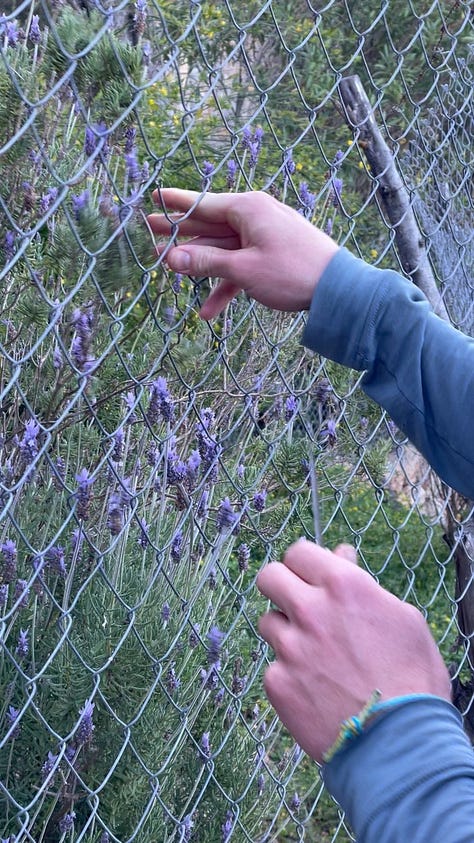
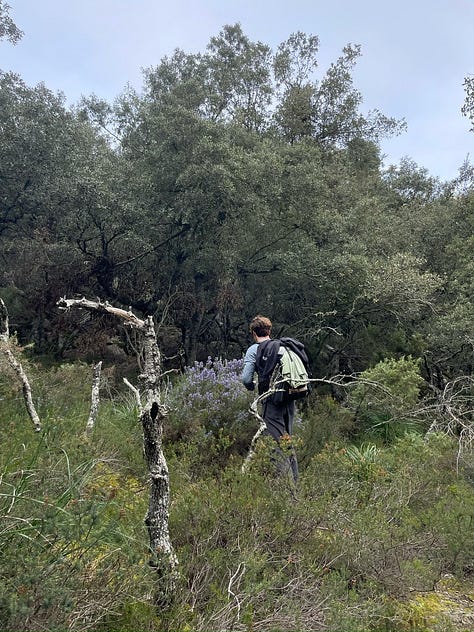
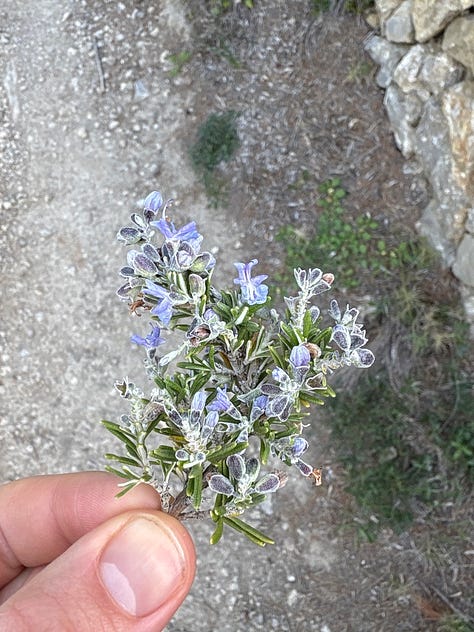
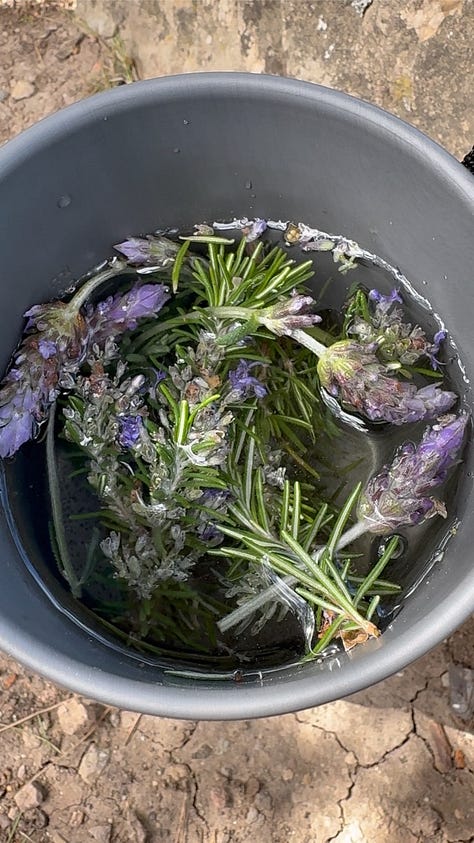
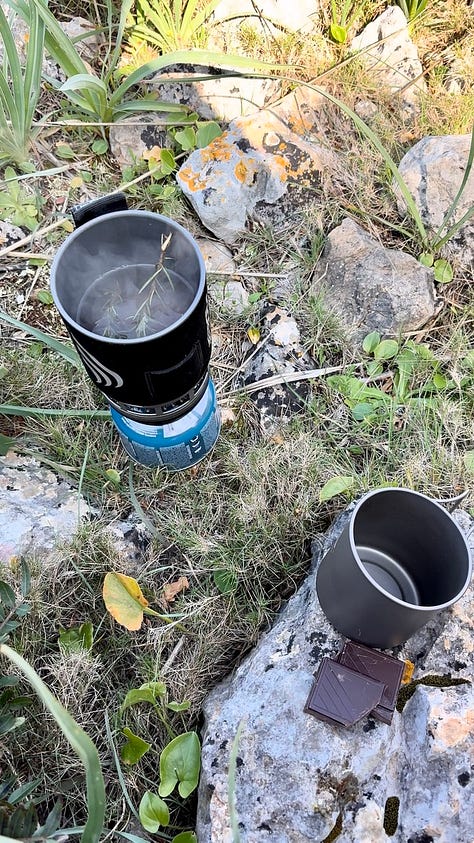
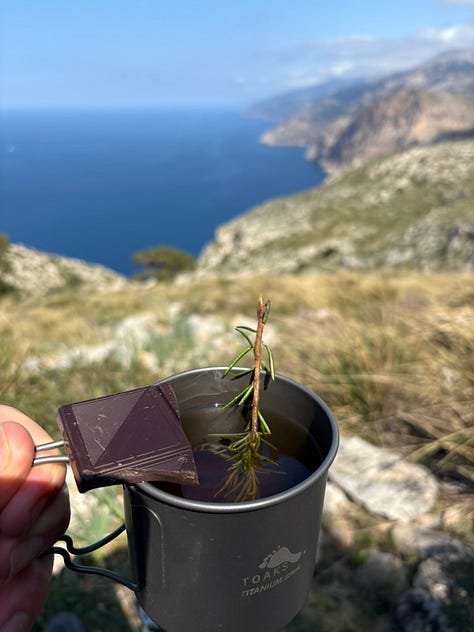
From reflection to practicalities.
GR221 daily stages
Including distance, elevation covered, and link to stage map (see complete elevation profile in the linked stage map):
Port d’Andratx → Ses Fontanelles (via Sant Elm) - 23km - 880m
Ses Fontanelles → Estellencs - 12km - 570m
Estellencs → Esporles - 15km - 550m
Esporles → Deia - 23km - 1200m
Deia → Soller (via Port de Sóller) - 17km - 420m
Soller → refugio Tossals Verds - 21km - 1140m
Tossals Verds → Lluc - 17km - 1100m
Lluc → Pollença - 17km - 180m
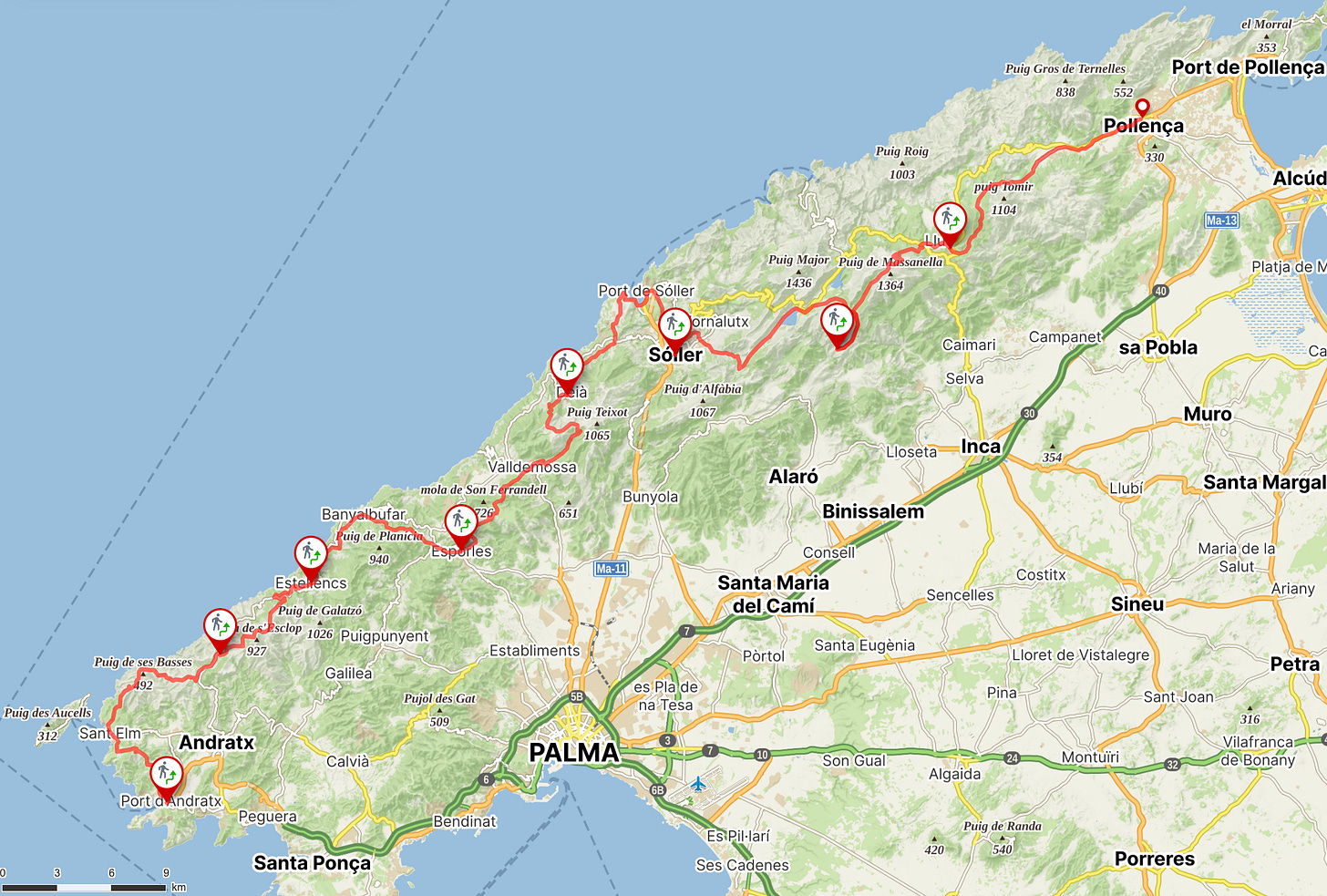
GR221 accommodation
Below, I have listed the places I stayed at, including (what I think would be) relevant information and pictures.
In Ses Fontanelles
I stayed at Finca Ses Fontanelles. Ses fontanelles means “the little springs,” which is not without reason; the place is located in a beautiful, lush valley. I stayed in the dormitory (a refugio), which was basic but comfortable enough. The owner prepared dinner, which was good quality.
Have a look at the Google reviews; people, including the people I met on the trail, have mixed opinions about the owner.
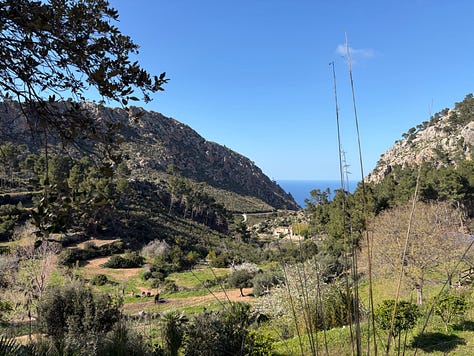

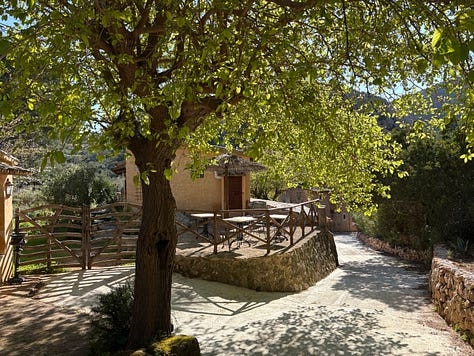
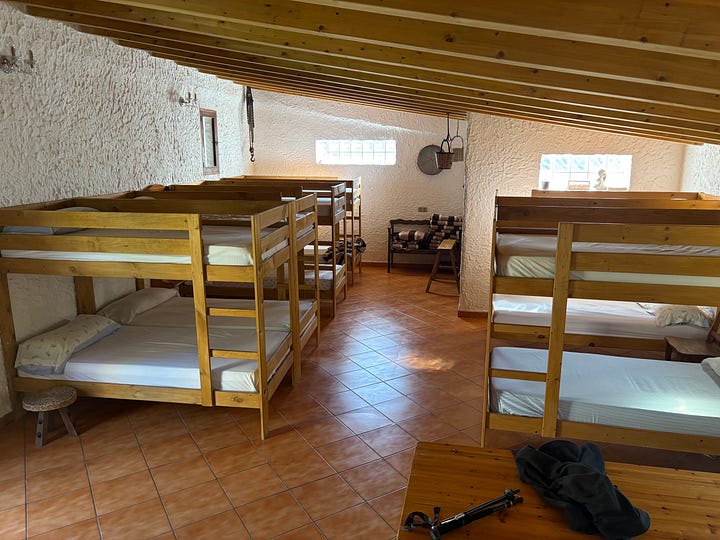
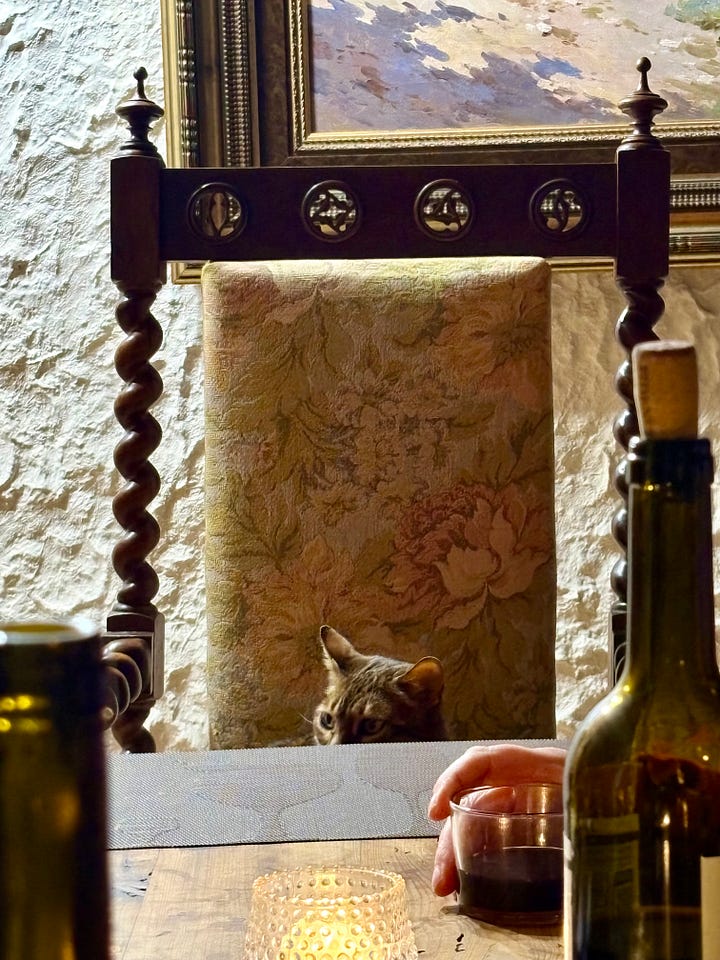
In Estellencs
I stayed at Hotel Maristel. It was comfortable and fine. The spa was okay; welcome after the walking. Breakfast was incredible.
In Esporles
I stayed at Hostel Sa Fita Backpackers. It’s a good hostel with a very, very comfortable garden and a well-equipped kitchen.
In Deia
I stayed at Refugio Can Boi, the first refugio I stayed at. The place is great, and the food was exactly what I needed. I liked this place and the other refugios; more on them later.
In Soller
I stayed at Hostal Nadal. Good accommodation, very well situated in the centre of Soller and close to the GR221 trail.
An alternative stay in Soller is Refugio de Muleta. However, it is closer to Port Soller, which could make the long stage the following day even longer.
In Tossals Verds
I stayed at Refugio Tossals Verds. There are few other options if you want to walk here without taking a bus to accommodation. I loved this refugio, mainly because of its location and its beautiful, tranquil surroundings.
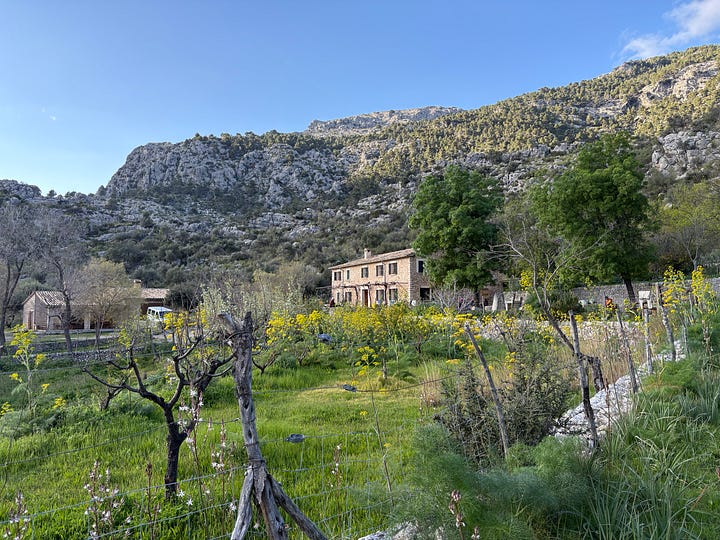
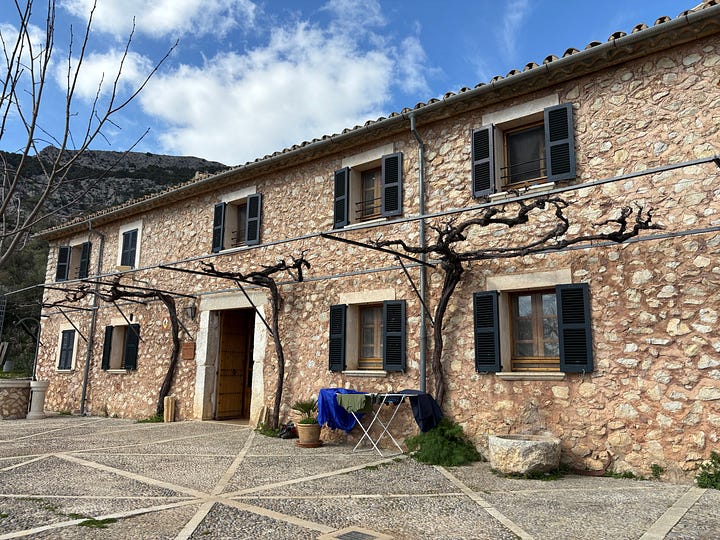
In Lluc
I stayed at Refugio Son Amer, about a 25-minute walk up the hill from Santuari de Lluc. It has good facilities and a great view over the monastery.
An alternative stay in Lluc is in Santuari de Lluc itself. I have done this twice in the past, and it is quite a special experience. At this moment, it is only possible to book a two-night minimum stay. Sending an email to request a one-night stay didn’t work for me.
In Pollença
I did not stay the night in Pollença; instead, I took the bus to Palma. The bus ride took about one hour through the middle of Mallorca; I paid €4,50.
An option for a stay in Pollença is Refugio del Pont Romà.
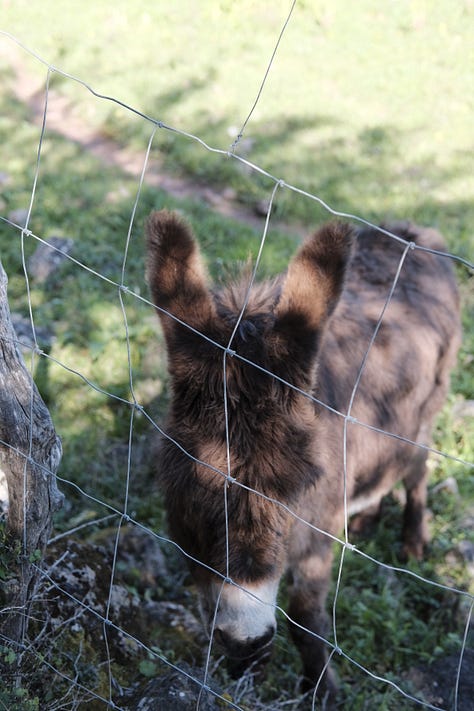
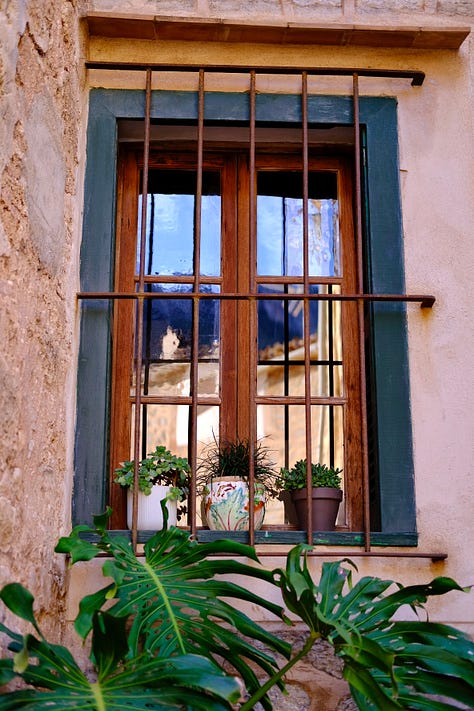
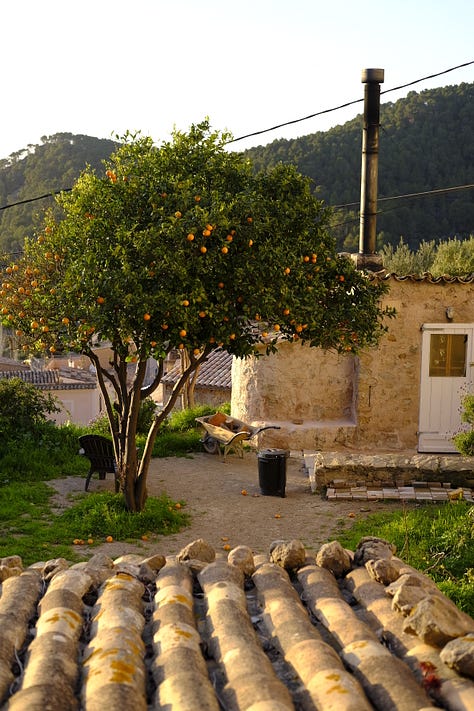
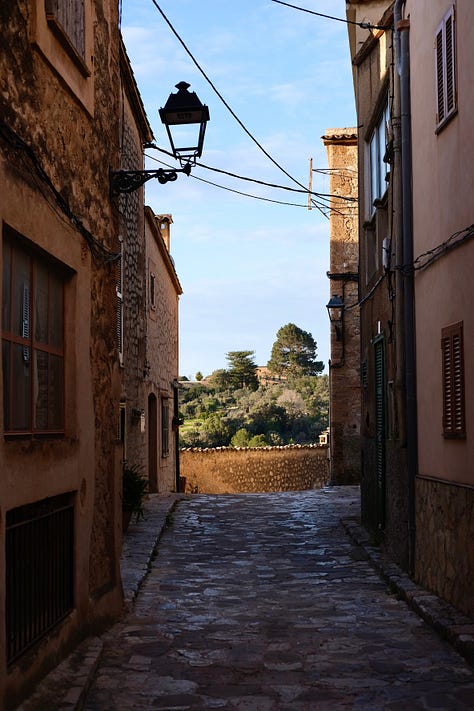
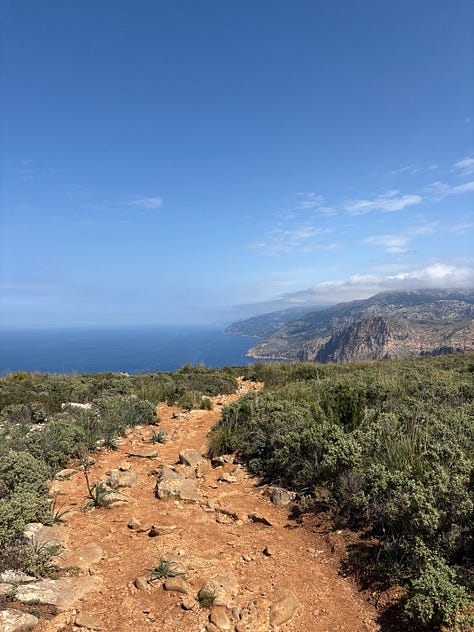
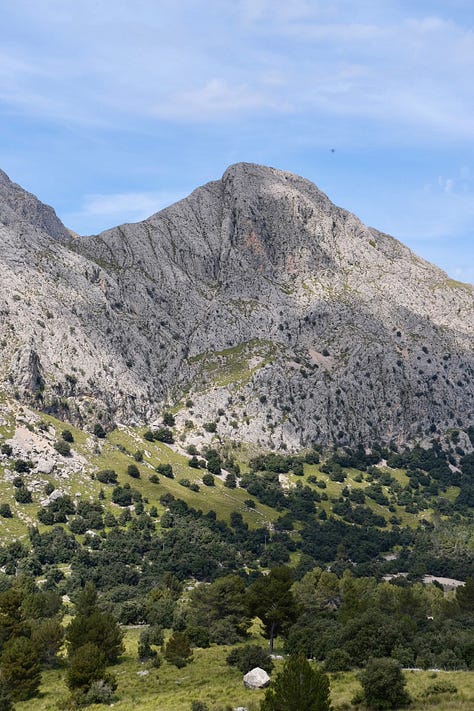
Some final thoughts
Refugios are a great place to stay. They are basic but comfortable enough. The beds are squeaky, and you will probably be sleeping with people snoring around you, but it’s part of the fun (bring earplugs). Book them early (probably all accommodation). Include a diner; they are good. Breakfast is basic but good enough for me.
When to walk the GR221: I walked at the end of March/beginning of April. Weather-wise, it was perfect hiking weather. As it is peak hiking season, you will meet other walkers, which will be a social thing. You won’t be alone.
Shoes matter on the GR221, but what kind of shoes you choose is personal. I have been walking in Altra Lone Peaks for four years (four pairs). For this walking season, I’m using Altra’s Lone Peak 9+. I’m very happy with them. If your feet and ankles need a lot of support (Dry Stone), get something appropriate for them. I’ve seen people on the trail sprain their ankles.
Trekking poles - My Dutch legs were very happy that I brought trekking poles for the Dry stone pathed island mountains. I used my Leki Makalu FX.One Carbon (I got them discounted for €140) - weighing about 500 grams.
Navigation - The trail is very well marked. From the start in Port d’Andratx to the end in Pollença, there are very clear signs, often mentioning the exact distance and times to the next village and/or refugio. In places where a sign might be missing or where people think you could miss a path, you will often see a cairn or a painted red dot. Still, it was useful to have a navigation tool as a backup and to see the (upcoming) elevation profile. For this, I used Mapy.com and was very happy with it. Find the routes that I used here. Make sure to download the map for offline use.
Other hiking-specific apps that I used were Peakfinder ($4,99), which is not essential but fun for seeing the names and heights of peaks, and Sun Tracker (free), which I used to check where the sunset would be and at what time.
I can carry less, skip the 4 cans of tuna, 2 cans of sardinillas, a 10-day supply of nuts, etc
Clothing - When I walked, the daytime temperatures varied between 17 and 22 degrees. Ideal, but at some moments, it was pretty cold on the mountain peaks or when you are sweating and stop for a snack. Layers are essential— I go full Merino. Also bring rain clothes, you might need them.
GR221 difficulty - The trail is not easy, mainly due to the elevation and terrain. But definitely doable for most people, with some preparation.
Water sources en route can be limited, so sometimes you must coordinate at the beginning of the day. At or close to every accommodation, you can buy bottled water or drink tap water.
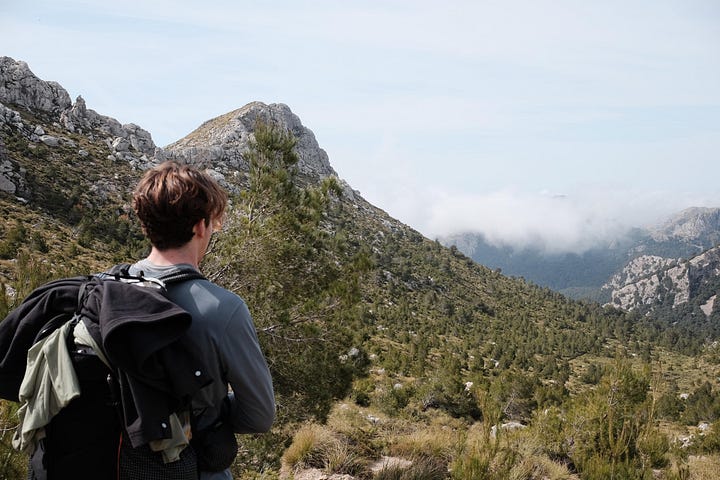
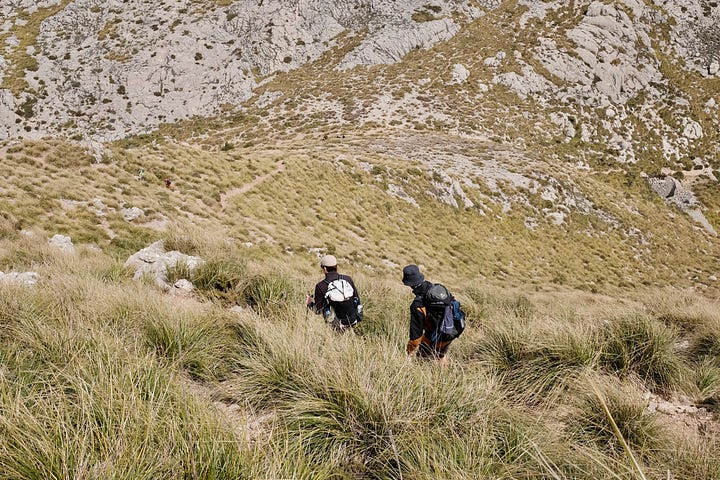
Last but not least: favorite hiking food
Cocarroi or empanadas are (after boiled eggs) my favourite hiking food. Cocarroi are typical Mallorquin versions of empanadas, often filled with different vegetables. They can be found at almost any bakery or supermarket. My favourite empanadas on the road were in Banyalbufar at Sa Cova, owned by Argentinians who make great beef empanadas.
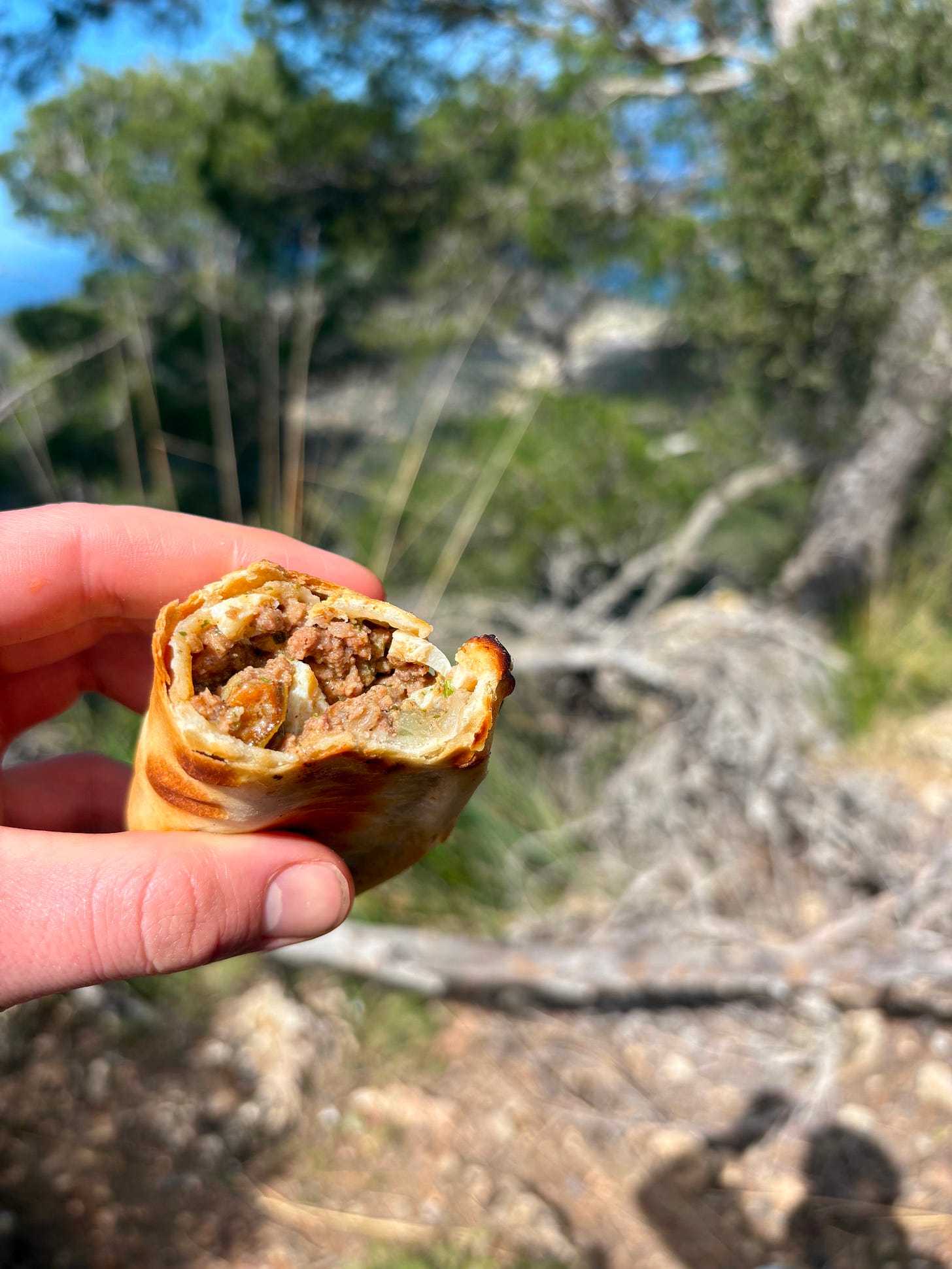
— 💛 Felipe


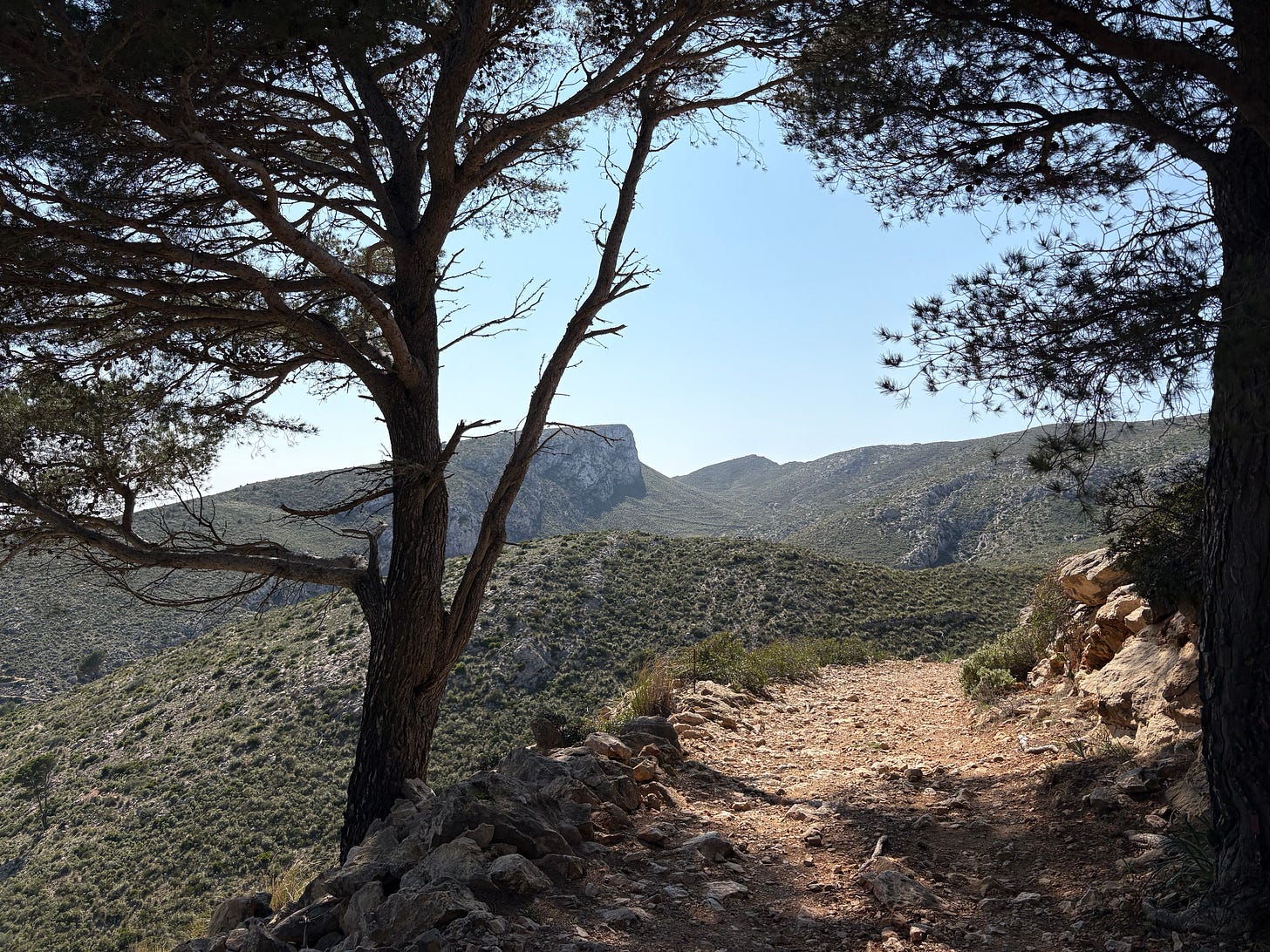
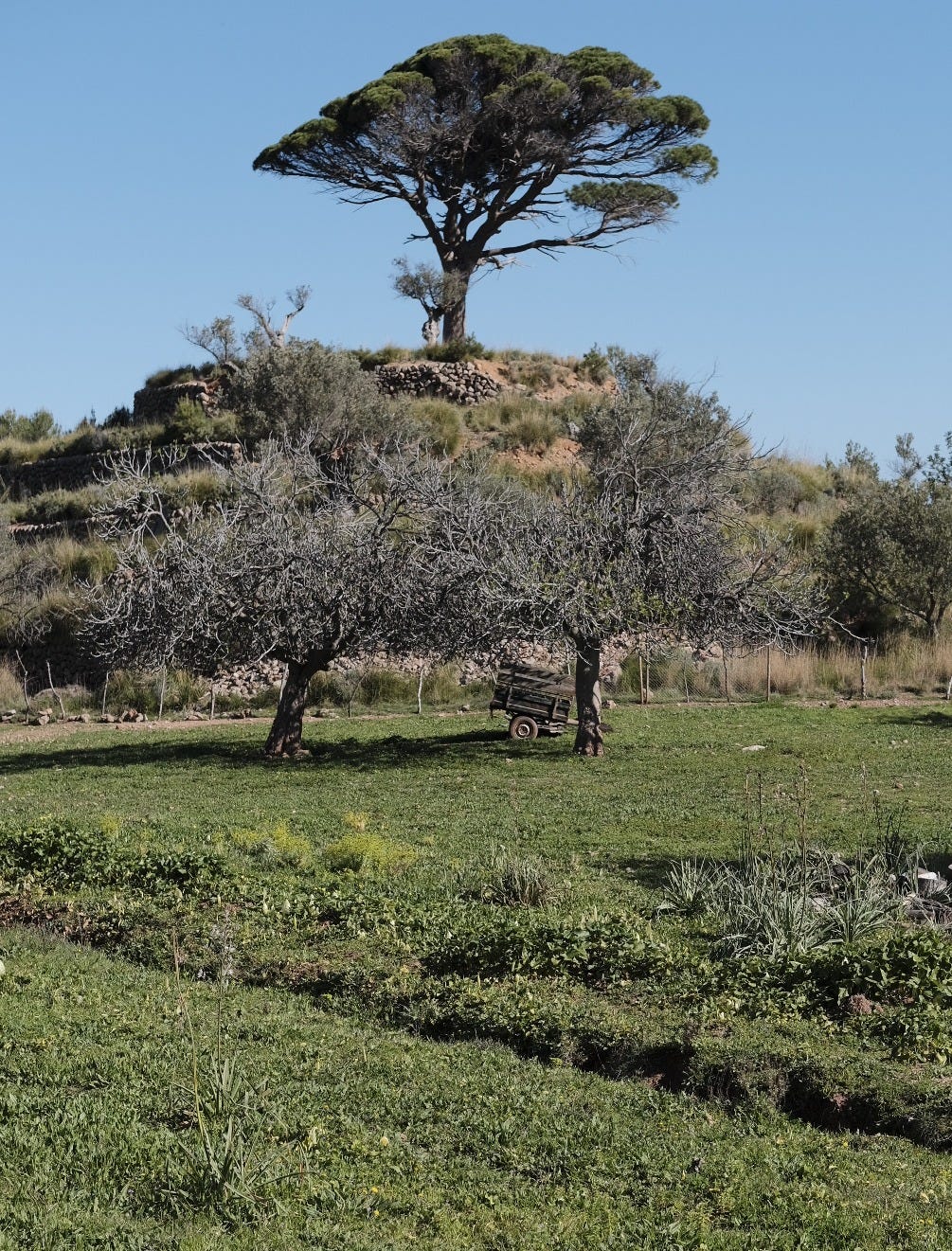


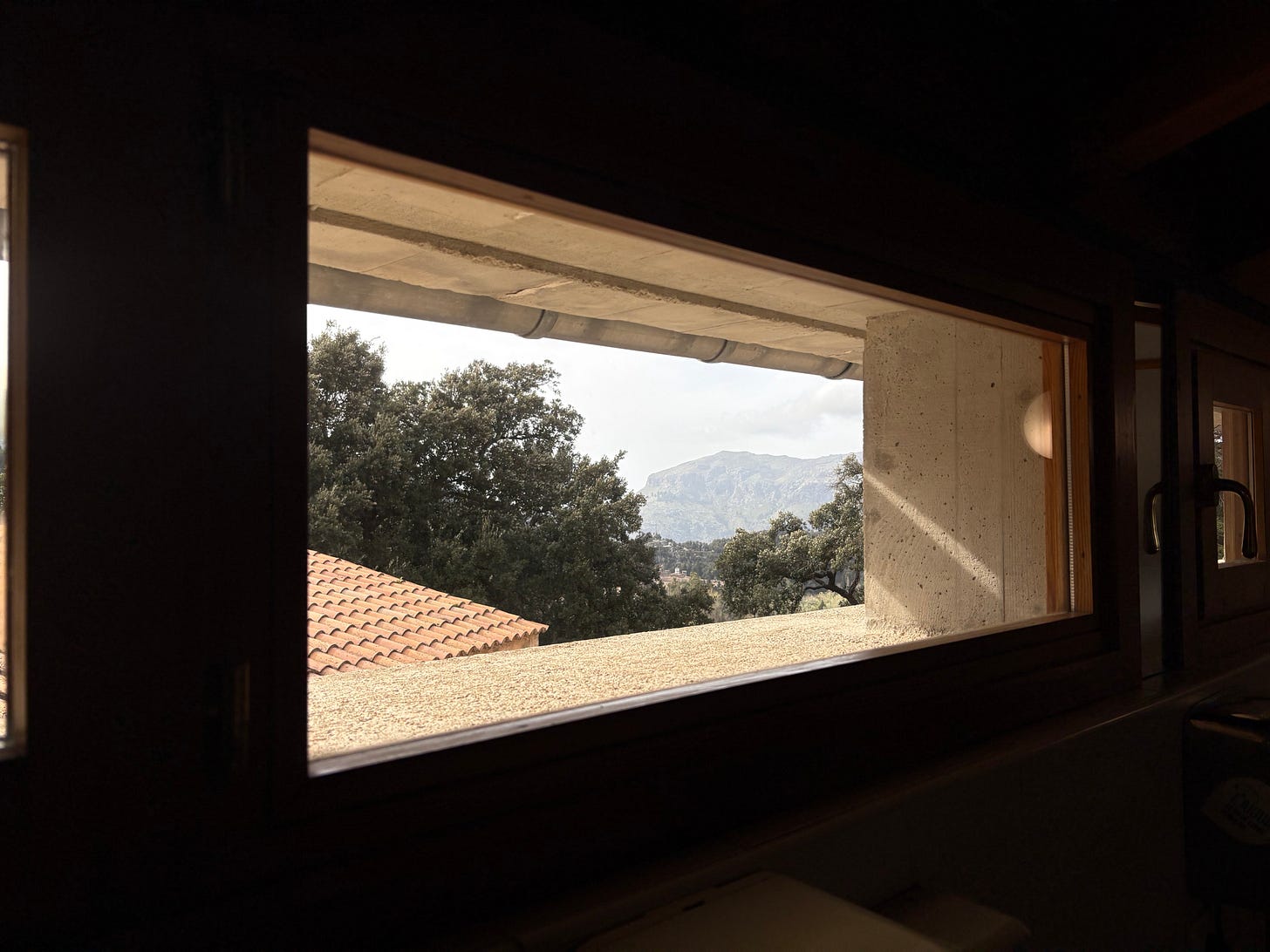

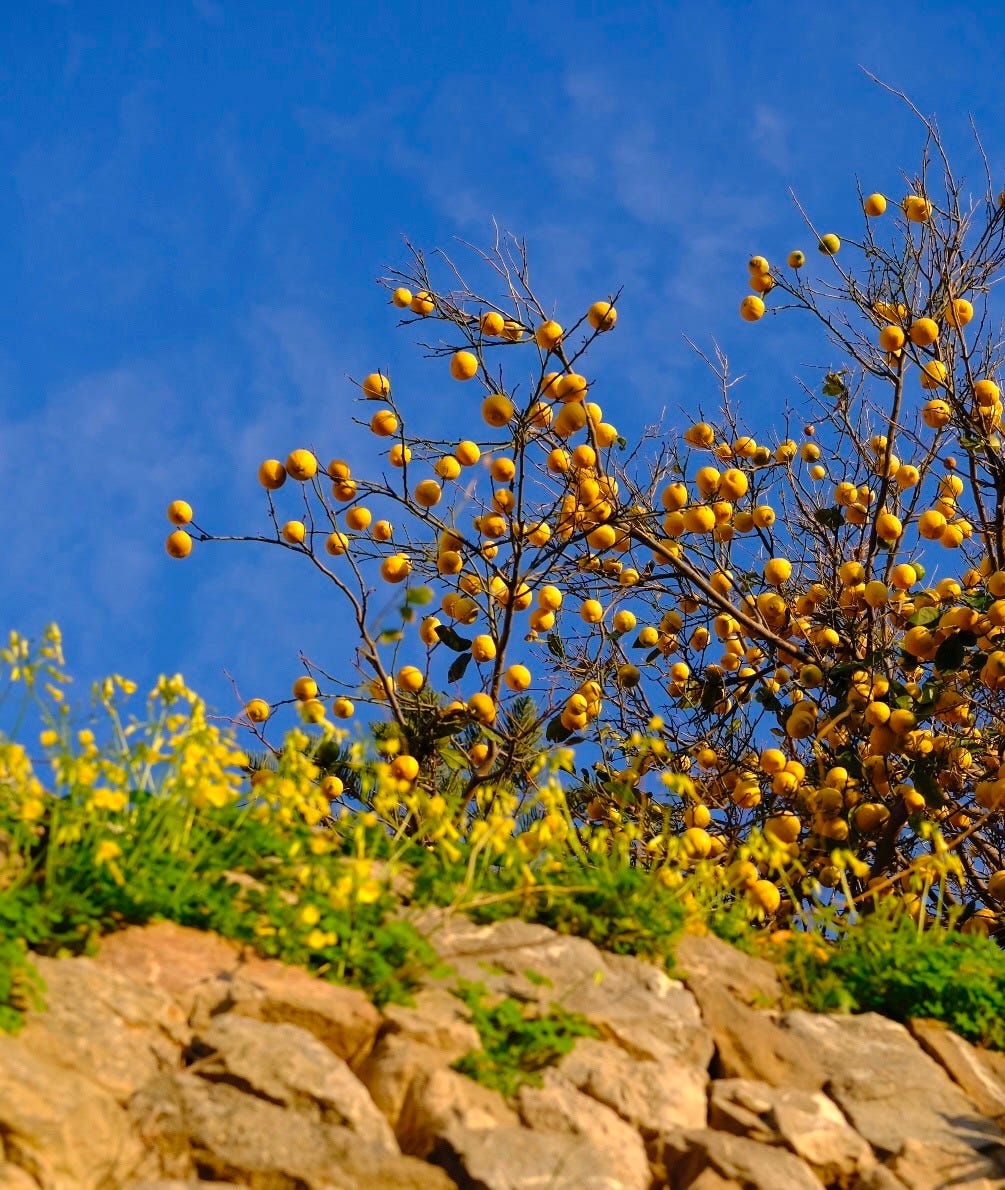
Really nice post, thank you Felipe, it was so lovely to meet you on the trail!
Awesome to read! Thanks for sharing!